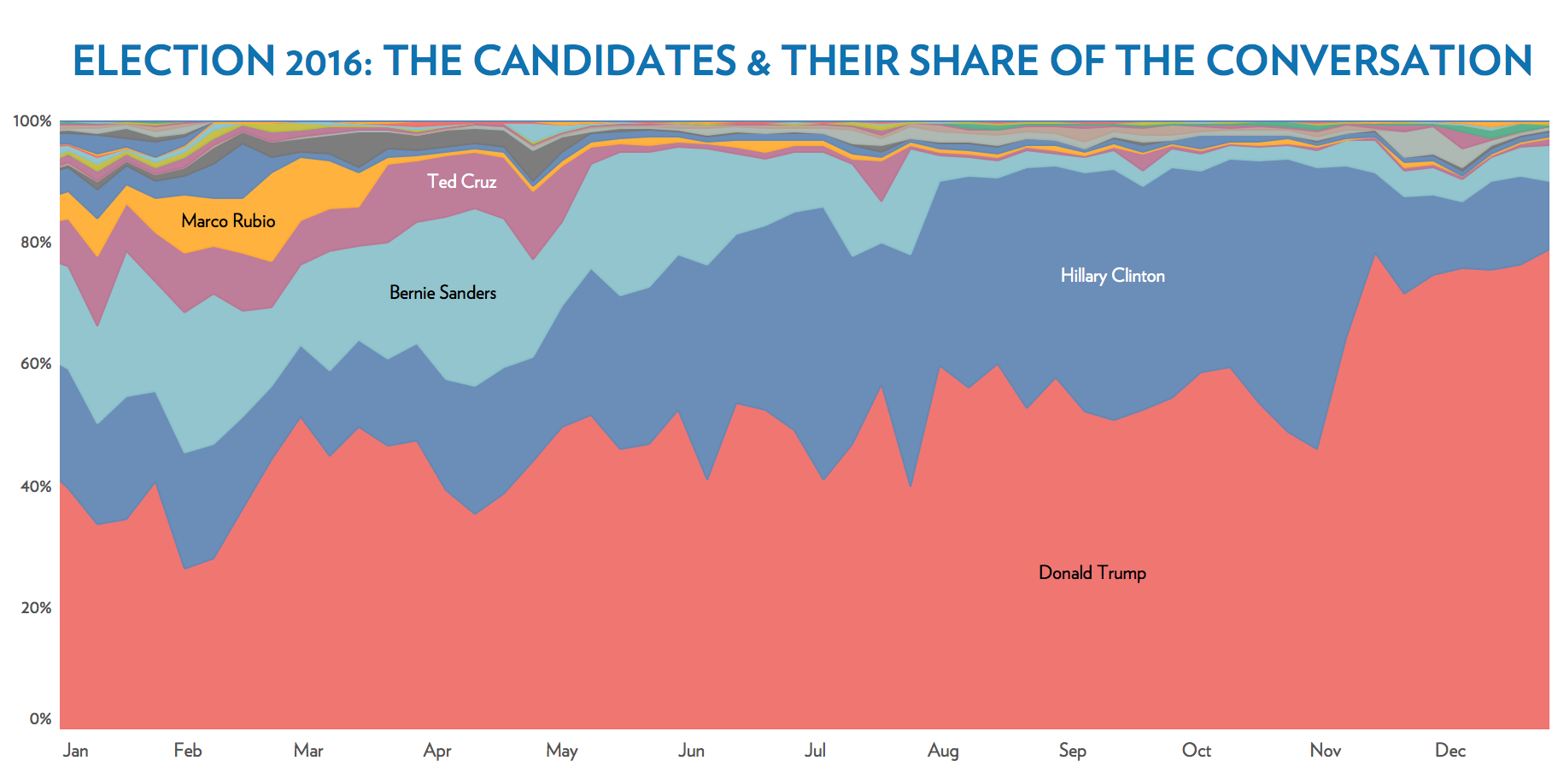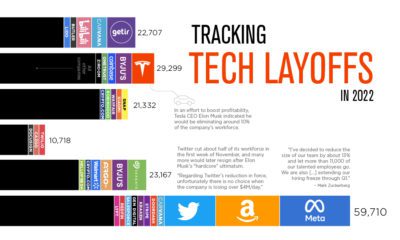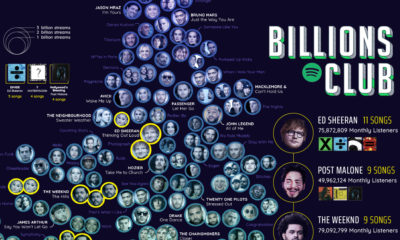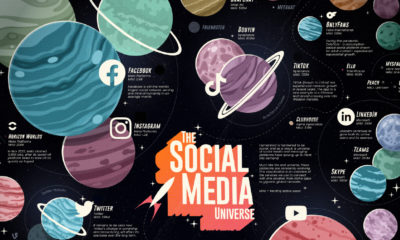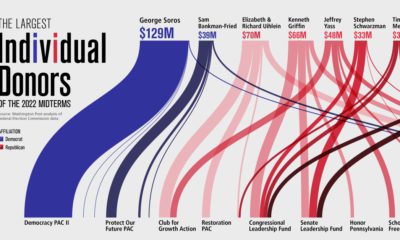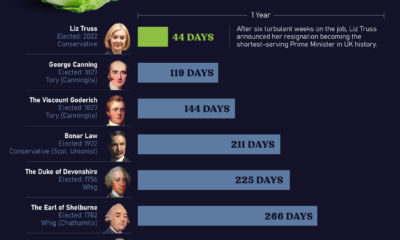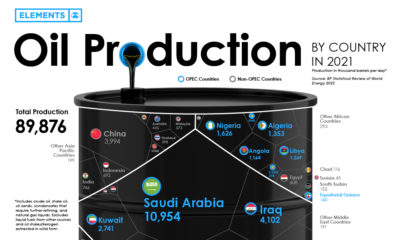It seemed like Donald Trump, Wikileaks, and so-called “fake news” dominated headlines throughout the year, regardless of what was going on in the world. But how did the news cycle actually break down from a quantitative perspective? For the second year in a row, we look to Echelon Insights for their infographic that analyzes the year’s news based on data from over two billion tweets.
Trumping the Conversation
While it is certainly no surprise that Donald Trump dominated the majority of political conversations, the actual numbers help to provide more clarity to this claim. Trump consistently accounted for about 40-60% of the share of candidate mentions for the majority of the year leading up to the election, even during the primaries. Most of the time, this was roughly double that of Hillary Clinton’s share of mentions. After November 8th, Trump mentions skyrocketed to make up nearly 80% of all candidate mentions. Even though many of these mentions were of the negative variety, Trump proved that all publicity is good publicity. Trump’s statements got non-stop media coverage and social engagement, giving the Trump campaign a name recognition and mind share advantage. And ultimately, despite several controversial statements, this allowed his key messages to get relayed to the electorate where they were needed.
WikiLeaked
Hillary Clinton and the DNC also received no shortage of bad press – and these ended up being the two most-talked about “scandals” of the year by Twitter users in the U.S. Here are the top 10 political controversies, and their number of mentions in 2016: The original DNC leak from WikiLeaks in late-July prompted the resignation of DNC Chair Debbie Wasserman Schultz over allegations of the DNC undermining the Bernie Sanders campaign. Meanwhile, the 50,000 emails from John Podesta were made available to the public in smaller tranches in October and November. The end result of this smart release strategy was that WikiLeaks and the hacks stayed in the news throughout the year, making it the top political controversy story (in terms of U.S. tweets) in 2016. on Even while political regimes across these countries have changed over time, they’ve largely followed a few different types of governance. Today, every country can ultimately be classified into just nine broad forms of government systems. This map by Truman Du uses information from Wikipedia to map the government systems that rule the world today.
Countries By Type of Government
It’s important to note that this map charts government systems according to each country’s legal framework. Many countries have constitutions stating their de jure or legally recognized system of government, but their de facto or realized form of governance may be quite different. Here is a list of the stated government system of UN member states and observers as of January 2023: Let’s take a closer look at some of these systems.
Monarchies
Brought back into the spotlight after the death of Queen Elizabeth II of England in September 2022, this form of government has a single ruler. They carry titles from king and queen to sultan or emperor, and their government systems can be further divided into three modern types: constitutional, semi-constitutional, and absolute. A constitutional monarchy sees the monarch act as head of state within the parameters of a constitution, giving them little to no real power. For example, King Charles III is the head of 15 Commonwealth nations including Canada and Australia. However, each has their own head of government. On the other hand, a semi-constitutional monarchy lets the monarch or ruling royal family retain substantial political powers, as is the case in Jordan and Morocco. However, their monarchs still rule the country according to a democratic constitution and in concert with other institutions. Finally, an absolute monarchy is most like the monarchies of old, where the ruler has full power over governance, with modern examples including Saudi Arabia and Vatican City.
Republics
Unlike monarchies, the people hold the power in a republic government system, directly electing representatives to form government. Again, there are multiple types of modern republic governments: presidential, semi-presidential, and parliamentary. The presidential republic could be considered a direct progression from monarchies. This system has a strong and independent chief executive with extensive powers when it comes to domestic affairs and foreign policy. An example of this is the United States, where the President is both the head of state and the head of government. In a semi-presidential republic, the president is the head of state and has some executive powers that are independent of the legislature. However, the prime minister (or chancellor or equivalent title) is the head of government, responsible to the legislature along with the cabinet. Russia is a classic example of this type of government. The last type of republic system is parliamentary. In this system, the president is a figurehead, while the head of government holds real power and is validated by and accountable to the parliament. This type of system can be seen in Germany, Italy, and India and is akin to constitutional monarchies. It’s also important to point out that some parliamentary republic systems operate slightly differently. For example in South Africa, the president is both the head of state and government, but is elected directly by the legislature. This leaves them (and their ministries) potentially subject to parliamentary confidence.
One-Party State
Many of the systems above involve multiple political parties vying to rule and govern their respective countries. In a one-party state, also called a single-party state or single-party system, only one political party has the right to form government. All other political parties are either outlawed or only allowed limited participation in elections. In this system, a country’s head of state and head of government can be executive or ceremonial but political power is constitutionally linked to a single political movement. China is the most well-known example of this government system, with the General Secretary of the Communist Party of China ruling as the de facto leader since 1989.
Provisional
The final form of government is a provisional government formed as an interim or transitional government. In this system, an emergency governmental body is created to manage political transitions after the collapse of a government, or when a new state is formed. Often these evolve into fully constitutionalized systems, but sometimes they hold power for longer than expected. Some examples of countries that are considered provisional include Libya, Burkina Faso, and Chad.
